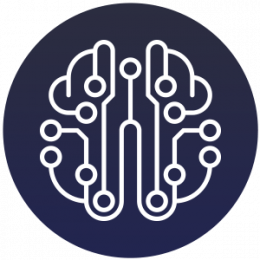
The Discriminator’s job is to take the exact same data that the Generator has and show him why his output is fake and how he could do better.
In a nutshell, The Generator produces an image. The Discriminator reviews that image and points out everything wrong with it. The Generator, who is very competitive, takes the Discriminator’s brutal feedback and tries again. And again. And again. Till he produces something that the Discriminator has no comments on; in other words, the Discriminator can’t tell that the image is fake.
It’d be kind of like if I had a business forging drivers licenses, and I owned the machine that the TSA uses at the airport to check your credentials. I’d build a fake license. Test it. Get rejected. Try again. Make changes. Test it again. Get rejected. Try again. Rinse and repeat till I could get something that consistently gave me the green light.
Of course, this is oversimplified, and neither the Generator nor the Discriminator is a real person (they’re both algorithmic architectures), but you get the idea. Person X (Generator) wants to get into the VIP section where the real party is. The Bouncer (Discriminator) will allow Person X to pass with the proper credentials. The Bouncer (Discriminator) has a soft spot for Person X, so he keeps telling Person X precisely what she needs to do to get in till Person X finally gets it right, and the Bouncer (Discriminator) lets her pass. Their relationship is “adversarial” but in a cute rom-com way.
People mistakenly pit the Generator and the Discriminator against each other, like Superman versus Lex Luthor. Their relationship is “adversarial” but in a happy-ever-after, let’s-defeat-the-bad-guys-together way, not a bloodbath.
Why are GANs important?
GANs are good at creating something from nothing. They’re also fantastic for taking one thing and changing it to another. They can generate text, images, voice, video, and music. They’re (mostly) the reason why some deepfakes are so realistic.
Why would a Marketer care about deepfakes?
Well, as controversial as it might be, they’re going to be KILLER for Marketing. Powered by Machine Learning, GANs can be very convincing. In fact, they’re so convincing that people often think they look more real than the actual thing.
What can I use GANs for today? This whole deepfake thing seems very Minority Report. Are there any real applications?
Many. You can use them for producing high-quality images with customized attributes, styles, and poses; creating personalized products; converting B/W images into color; generating realistic images from text (way more interesting than it sounds); filling in images from specs/outlines; branding images; generating alternate views of products; generating logos and animation models; developing “photos” of product prototypes for pre-order; cleaning up and enhancing videos without costly reshoots; rephrasing copy with user-defined keywords; improving your Chatbots; generating voices, translating images; and so much more.
Are you already using a GAN in your marketing efforts? Have a tip you’d like to share? Have a question you’d like to ask about GANs? Tweet @amyafrica or write info@eightbyeight.com.
A Down-and-Dirty Definition for Marketers. (Read more about these here.)


 Catalogers and other offline marketers have many advantages when it comes to E-Commerce.
Catalogers and other offline marketers have many advantages when it comes to E-Commerce. 

